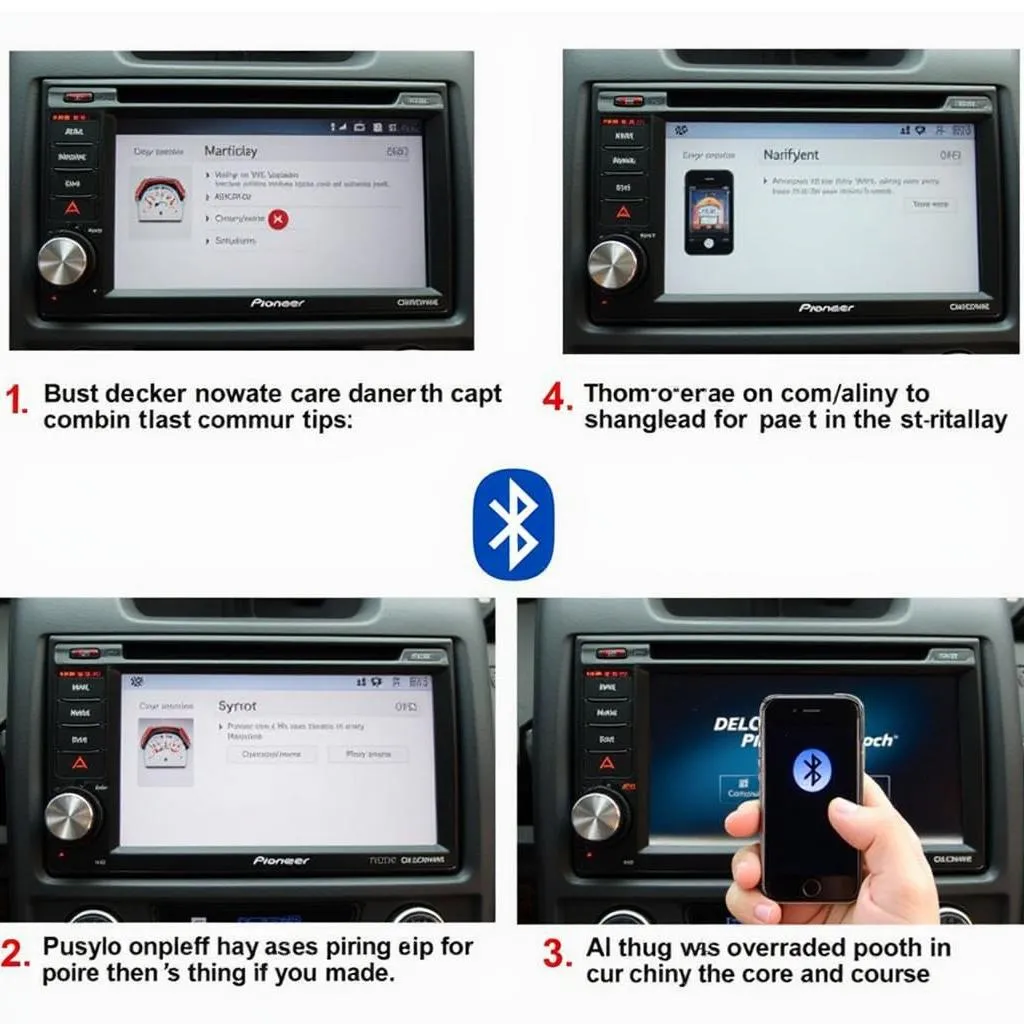If your 2003 Volkswagen Passat’s brake pad warning light has illuminated your dashboard, it’s crucial to address it promptly. This light is your car’s way of signaling potential wear and tear on your brake pads, a critical safety component of your vehicle. Ignoring this warning could lead to costly repairs and, more importantly, compromise your safety on the road.
This comprehensive guide will walk you through the common causes of a 2003 VW Passat brake pad warning light, how to diagnose the issue, and the steps you can take to resolve it.
Understanding Your VW Passat’s Brake Pad Warning System
Your Passat utilizes a sensor-based system to monitor the thickness of your brake pads. A small wire, known as a wear sensor, is embedded within the brake pad material. As the brake pad wears down with use, this sensor eventually makes contact with the brake rotor. This contact completes an electrical circuit, triggering the brake pad warning light on your dashboard.
Common Causes of a 2003 VW Passat Brake Pad Warning Light
While worn brake pads are the most common culprit, several other factors can trigger the warning light in your 2003 VW Passat:
- Worn Brake Pads: As explained earlier, this is the most frequent cause. Brake pads have a finite lifespan and will eventually wear down, requiring replacement.
- Faulty Brake Pad Wear Sensor: Like any electrical component, the wear sensor itself can malfunction. A break in the sensor wire or a faulty connection can trigger the warning light even if your brake pads have sufficient life remaining.
- Issues with Brake Fluid: Low brake fluid, often caused by a leak in the brake system, can trigger the brake pad warning light. It’s essential to check your brake fluid level and inspect for leaks.
- Electrical Problems: A short circuit or wiring issue within the brake pad warning system can lead to a false positive, illuminating the warning light without an actual brake pad problem.
Diagnosing the Problem: A Step-by-Step Guide
Before jumping to conclusions, it’s crucial to diagnose the root cause of the warning light:
-
Check Your Brake Fluid: Park your Passat on a level surface and locate the brake fluid reservoir under the hood. The reservoir will have a “min” and “max” marking. If the fluid level is below the “min” mark, you likely have a leak in your brake system, requiring immediate attention from a qualified mechanic.
-
Inspect Your Brake Pads: If your brake fluid level is adequate, the next step is to visually inspect your brake pads. You’ll need to remove the wheel to get a clear view. Look at the thickness of the brake pad material. If it’s less than 1/4 inch, it’s time for a replacement.
 Worn brake pads on a VW Passat
Worn brake pads on a VW Passat
-
Test the Brake Pad Wear Sensor: If your brake pads appear to have sufficient life and your brake fluid level is normal, the wear sensor may be faulty. You can test the sensor’s continuity using a multimeter.
-
Seek Professional Help: If you’re unable to diagnose the problem yourself or are uncomfortable working with car components, it’s best to take your Passat to a qualified mechanic specializing in VW vehicles. They have the expertise and tools to accurately diagnose and repair the issue.
Resetting the Brake Pad Warning Light
Once you’ve addressed the underlying cause, the brake pad warning light should reset itself automatically. However, in some cases, you may need to reset it manually. The process for resetting the warning light can vary depending on your Passat’s specific model year and trim level. Refer to your owner’s manual for the precise instructions.
how to reset 2003 vw passat brake pad warning
Preventative Maintenance: Keeping Your Brakes in Top Condition
To avoid unexpected brake problems and ensure your safety, adhere to these preventative maintenance tips:
- Regular Brake Inspections: Schedule brake inspections with a trusted mechanic at least once a year or every 12,000 miles, whichever comes first.
- Timely Brake Pad Replacements: Don’t wait for the warning light to come on before replacing your brake pads. Replace them preemptively based on your driving habits and the manufacturer’s recommendations.
- Quality Brake Components: Always opt for high-quality brake pads and rotors from reputable brands.
- Brake Fluid Flush: Brake fluid absorbs moisture over time, reducing its effectiveness. Flush your brake fluid every 2-3 years or as recommended by your mechanic.
Conclusion
Addressing a 2003 VW Passat brake pad warning light promptly is crucial for your safety and the longevity of your vehicle. By understanding the potential causes, following the diagnostic steps outlined in this guide, and practicing preventative maintenance, you can keep your Passat’s brakes in optimal condition for safe and worry-free driving.
Remember, when in doubt, always consult a qualified mechanic specializing in VW vehicles for expert diagnosis and repair.


